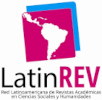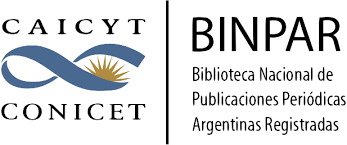About the Journal
Structure of the scientific journal
CARDINALIS has the following sections:
-
Articles section: contributions on geographic, social and environmental topics not exceeding 25 pages in length (including notes, bibliography, maps, tables, etc.). It is the central section of the journal.
-
Reviews Section: for bibliographic reviews (of articles and books) as well as other formats (reviews of documentaries, videos, films, among others). The length of these contributions is a minimum of 3 pages and a maximum of 6 pages (including notes, bibliography, maps, tables). Reviews that articulate two or more texts in their development will be especially valued.
-
Academic Contributions Section: open to contributions of critical commentaries, research project advances, extension activity reports, didactic pedagogical projects. Contributions with a maximum length of 15 pages (including notes, bibliography, maps, tables, etc.) will be accepted.
-
Conversations section: space for the presentation of dialogues where knowledge and/or spatial practices - of indigenous communities, social movements, peasants, among others - not necessarily institutionalized, legitimized and identified as scientific/academic, are shared. And academic references on relevant topics of interest to the journal. A maximum length of 15 pages (including notes, bibliography, maps, tables, etc.) will be accepted.
-
Translations Section: section of the journal for the presentation of scientific papers, interviews or conversations already published in other journals in other languages and which have been translated by the authors themselves with prior authorization from the other spaces where they have already been published and respecting the length and format expressed in the articles section.
-
Miscellaneous Section on Geography and Art: this space is intended to address issues at the interface between art and geography. The proposal invites people linked to these areas - visual artists, geographers, musicians, writers, musicologists, anthropologists, sociologists, among others - to propose a dialogue resulting in a hybrid and authorial text with a length of 3 to 7 pages. The use of different media (images/photography, sound, cartographic, virtual platforms, collages) and the exploration of different genres (poetry, essay, letter, chronicle, song) will be encouraged. This section should include an abstract and/or presentation, keywords (3 to 5) and if bibliographical references are used, they should be included according to the journal's regulations on this point. In the case of incorporating sound, audiovisual, hypermedia, etc. supports, the free access virtual platform where they are hosted must be indicated. The incorporation of images must comply with the journal's regulations on this point.
Guidelines for authors
All contributions proposed for publication must take into account the following guidelines:
1- Be unpublished and original, in Spanish and/or Portuguese language. It is essential that they have not been submitted for presentation in other scientific journals or editorial bodies. The contributions in conditions to be published (approved the double blind review and complied with the editorial rules), will be edited for the postulated issue of the journal or the following one. It is necessary that for any of the sections to which the papers are submitted, the personal or institutional e-mail of the authors must be provided (for translations, the contact e-mails of the authors must also be provided). If possible, the ORCID code (https://orcid.org/) and a brief biography of up to 100 words should also be included.
2- The submission of a contribution implies the authors' commitment not to submit it simultaneously to the consideration of other publications, or to inform the Editorial Committee of this fact for its decision on the postulation.
3- The editorial collective reserves the rights over the contributions published and to be published.
4- In order to ensure the anonymity of the review process, authors should pay close attention to any reference by which they can be identified.
5- The evaluation by the review committee is anonymous and cannot be appealed. The evaluation committee is external to the editorial board. The acceptance and quality of the published contributions is assured by said committee, who are in charge of approving or rejecting the contributions after the observations and recommendations they consider pertinent.
6- The sender is responsible for the content of the text and the veracity of the information contained therein. The conscious inclusion of fraudulent or inaccurate data is unethical behavior and will result in the automatic rejection of contributions.
7- The Editorial Committee may make formal changes required by the contributions for editing purposes, including their titles, after consultation with the authors.
8- In the case of authors whose contributions have been published in the previous issue of the journal and decide to submit a new paper, it is recommended to wait one issue to do so.
9- Contributions that do not comply with the established guidelines will be rejected.
Of the refereeing process
The Editorial Committee reviews the contributions submitted according to their relevance to the subject matter of the journal, and may directly reject the papers received without resorting to the external arbitration process if it considers that they do not meet the level of quality, due to lack of compliance with the guidelines established by the journal or for presenting evidence of fraud.
Once this stage is passed, the articles and academic contributions are submitted to the consideration of the Referee or Evaluating Committee, made up of specialists in the subjects of the contributions and are evaluated under the "double blind" system, which implies that the evaluators will not know the name of the author and vice versa. The evaluation reviews the quality of the contributions in terms of their conceptual rigor, academic relevance, originality and clarity of exposition.
The final result of the opinion may be:
Approved, in this case, it will be submitted to style correction for its final disposition in the journal.
Approved with modifications, regarding writing or bibliography, requests for clarification or observations that the evaluators consider pertinent. A period of time is granted for corrections. After the deadline, if the necessary corrections or disclaimers are not made, the contribution will not be published in that edition. If the necessary changes are made, the contribution is returned to the referees for final evaluation. Once the final version has been approved, it is proofread and published. If the final evaluation is not favorable, the article will not be published.
Not approved, when it does not meet the established minimum standards. The contribution will not be published in that issue, but may be submitted with changes for future issues.
In case of disparate opinions resulting from double blind refereeing, the Editorial Committee will review them and make a decision on the matter; it may be sent to a third refereeing.
Selected contributions will be published in the digital version. Cardinalis is not responsible for unpublished papers.
Method of sending originals contributions
The proposed contributions should be submitted in a Windows compatible word processor, Word document, and should be sent only in digital format, as an attachment to an e-mail message to the address revista.cardinalis@gmail.com.
The file should be named as follows: Author's last name, followed by underscore and section name. Example: García_Article.
General rules for the submission of contributions (articles, reviews and academic contributions)
Page layout
Paper size: A4
Orientation: vertical
Margins: top, bottom, right and left: 2.5 cm.
Paragraphs: No indentation. With spacing of 12 pts. before and 6 pts. after. Justified alignment. Font: Times New Roman 12. Line spacing: 1.5. Aligned: justified
ATTENTION: DO NOT include page numbering.
1. Structure of articles and academic contributions
Title of the contribution: UPPERCASE the first letter and then lowercase, except for specific words that require capitalization. Sentence centered and in bold. Font size 14, Times New Roman.
Name(s) of the author(s): first and last name (in that order), centered alignment and in italic format. Do not specify academic degrees obtained. Font size 12, Times New Roman. In a footnote, it is necessary to indicate the insertion and/or institutional reference of all authors and contact e-mail address of each one; also, mention the country of residence and -if available- inform their ORCID registration.
Abstract: up to 300 words maximum length. Include, after the abstract, 3 to 5 key words in lowercase and separated by semicolon. Title, abstract and keywords should be in the language of the article and in Portuguese or English (your choice). The title "Abstract" and "Keywords" should be in bold.
Subtitles in the body of the text: two levels of hierarchy in the subtitles. One in bold, lowercase and the other in italics (not bold); it is advisable not to number them unless the content requires it. Font size 12, Times New Roman, 1.15 spacing.
Textual quotations: in quotation marks (no italics). More than 40 words: in a separate paragraph, in font size 11, left and right indentation of 1 cm. and without quotation marks or italics. For doubts about the citation, see: https://normasapa.com/citas/
Figures: include images, charts/tables, graphs, diagrams, maps, photographs, etc., which should be numbered consecutively using Arabic numerals. They will be placed in the text in the corresponding place and will be headed with the expression "Figure Nº..." in bold format, followed by the title in lower case, all the text without selected format (without bold, italics and/or underlined), font size 10, aligned centered. The source of information should be indicated after the figure (at its foot), the word source in bold, all the text also in size 10.
Figures should be in JPG format and in the corresponding text space. They must have a quality not less than 300dpi and should not exceed 20mb.
Footnote: in automatic order and superscript. Single spacing. Times New Roman, font size 10. Text alignment justified.
Bibliography: Font: Times New Roman 10; Single spacing; Justified, with paragraph spacing after 6 pts. Both the list of bibliographical references and references to works in the text should be made according to the APA (American Psychological Association) Standards, Summary Guide to the Publication Manual with APA Standards, seventh edition 2020. See details at: https://drive.google.com/file/d/146XyppAqTV4Xs0797al3YW5CVViKs6hm/view?usp=sharing
2. Structure of reviews (bibliographic and documentary or other)
Title: it is suggested to state the title and below it the word "review". Capitalize the first letter and then lowercase, except for specific words that require capitalization. The sentence should be centered and in bold. Font size 14, Times New Roman.
Bibliographic data of the work: Title, author(s), Publisher, Place of publication, ISBN, number of pages, year of publication, all these data in a text box. Times New Roman font, size 11.
Introduction: presentation and location of the document to be reviewed, including information about the author(s) and the motivations for choosing the work.
Structure of the work: Description of the content to be reviewed. It is important that it is not only a description, but that there is an analytical and critical review of the content with personal observations. It is necessary to give an account of the evaluation of the work, highlighting strengths, weaknesses, potentialities and/or limitations.
Final words or conclusions: it is encouraged that such conclusions emphasize the link between the work reviewed and the object and theme of the journal.
Author's name: first and last name (in that order), aligned to the right and in italics. Below the name, place and date. Do not specify academic degrees obtained before the name. Font size 12, Times New Roman. In the footnote, it is necessary to indicate the insertion and/or institutional reference of all authors and contact e-mail address of each one; also, mention the country of residence and -if available- inform their ORCID registration.
MUST BE ACCOMPANIED BY AN IMAGE OF THE COVER OF THE DOCUMENT TO BE REVIEWED. THE SUBMISSION MUST BE IN JPG FORMAT.
3. Structure of conversations
Title: CAPITALIZE the first letter and then lowercase, except for specific words that require capitalization. Sentence centered and bold. Font size 14, Times New Roman.
Name of the author(s): first and last name (in that order) of those who participate in the writing of the conversation, centered and italicized. In a footnote, it is necessary to indicate the insertion and/or institutional reference of all the authors and contact e-mail address of each one; also, mention the country of residence and -if available- inform their ORCID registration.
Brief presentation of those who are part of the conversation: brief description of biographical or reference data that allow the reader to situate the person(s) with whom the conversation is being held.
Conversation: text expressing the content and central themes of the shared dialogue. Conclusions or closing.
For further information, please contact: revista.cardinalis@gmail.com.





